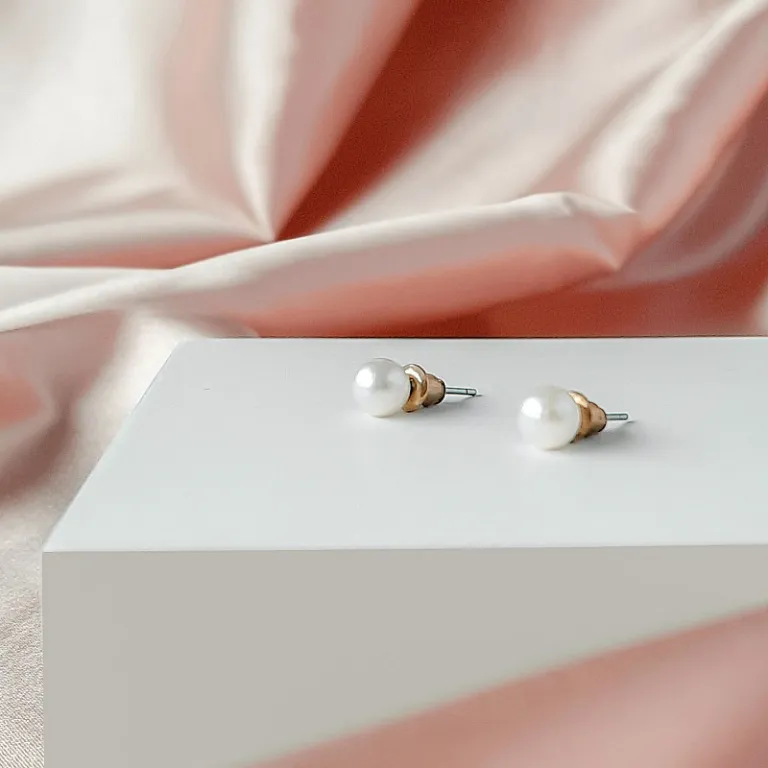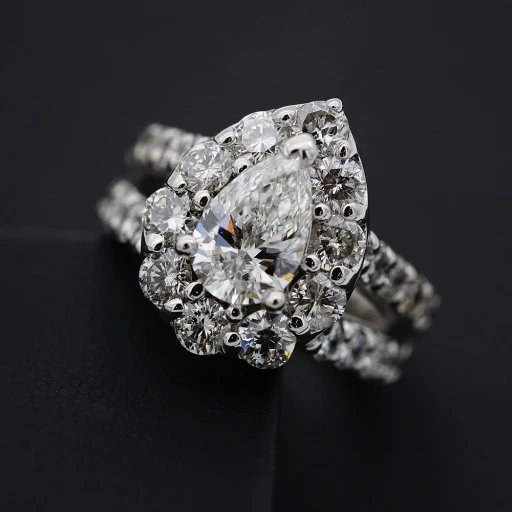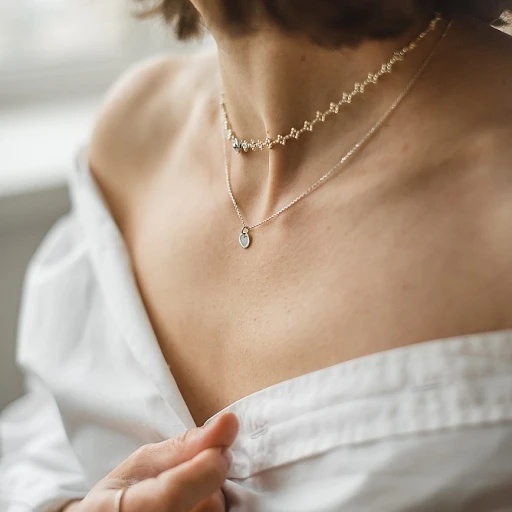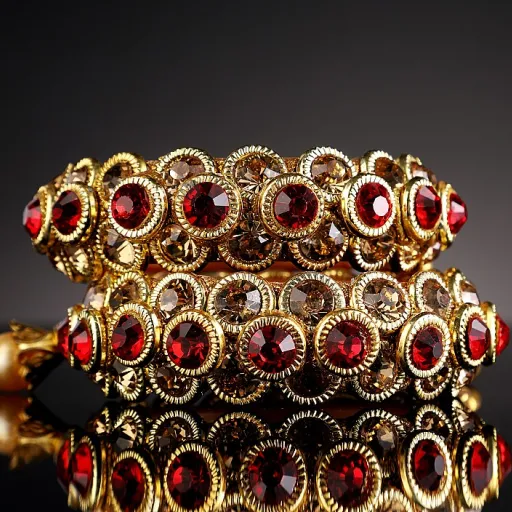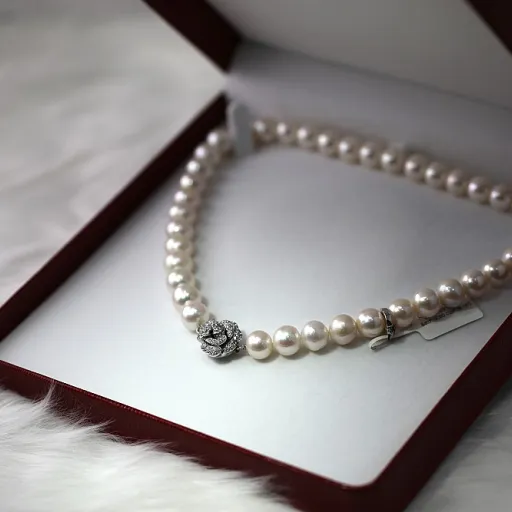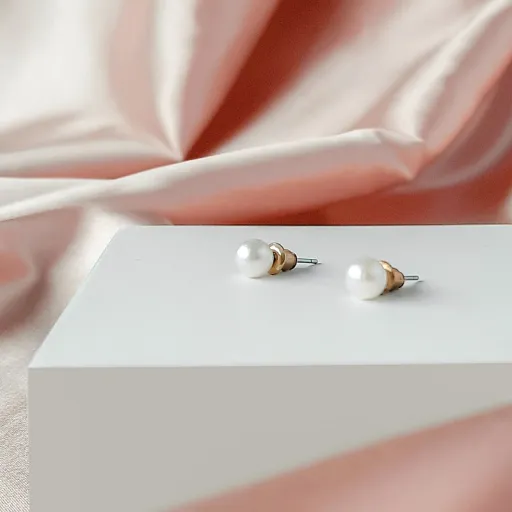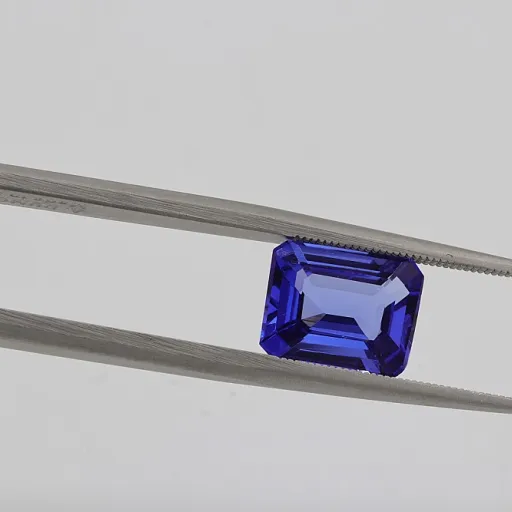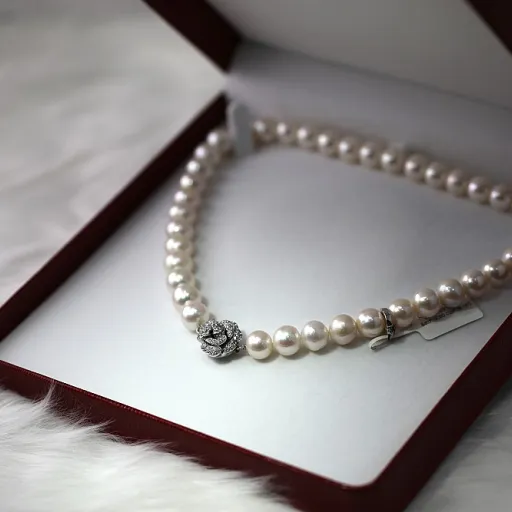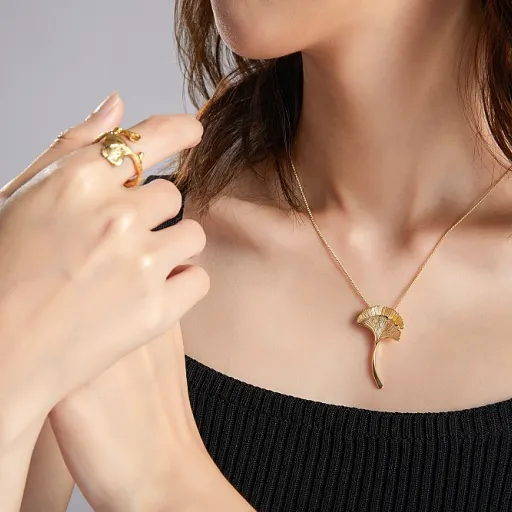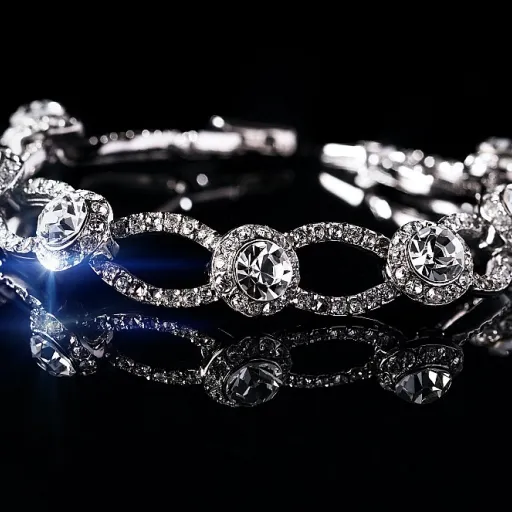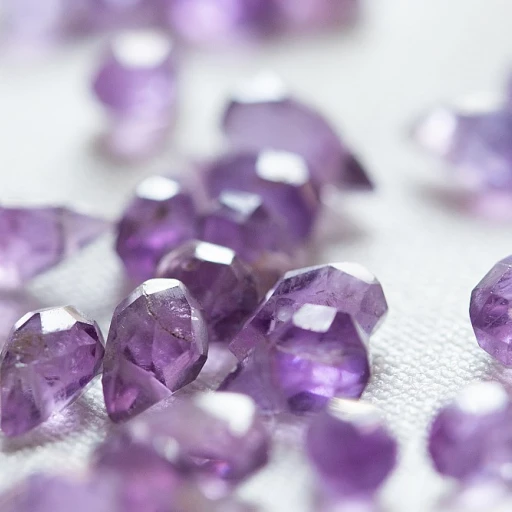
Understanding the royal blue sapphire color
What Sets Royal Blue Sapphires Apart?
The royal blue sapphire stands out in the world of fine jewelry for its captivating depth and vibrancy. This gemstone is prized for its intense blue color, which is neither too dark nor too light. The ideal royal blue is vivid, saturated, and almost velvety, often described as a "cornflower blue." This color is highly sought after by collectors and jewelry owners alike, making royal blue sapphires a symbol of sophistication and luxury.
Understanding the Spectrum of Blue
Sapphires range in color from pale sky blue to deep midnight hues. However, the royal blue variety is defined by its medium to deep blue tone with strong saturation. The blue color in sapphires is mainly due to trace elements of iron and titanium within the stone. Sri Lankan sapphires, especially those from Sri Lanka (formerly Ceylon), are renowned for their exceptional royal blue color and clarity. Other famous sources include Kashmir and Madagascar, but Sri Lankan stones are often preferred for their unique brightness and quality.
Shapes, Sizes, and Star Sapphires
Royal blue sapphires come in various shapes, with oval and cushion cuts being particularly popular for engagement rings and statement pieces. The shape sapphire owners choose can influence how the color appears, as certain cuts enhance the stone’s natural brilliance. Star sapphires, which display a star-like phenomenon called asterism, are another fascinating variety. These stones are typically cut as cabochons to best showcase the star effect, adding another layer of allure to the blue gemstone.
Color, Carat, and Quality
When evaluating a royal blue sapphire, color is the most critical factor, but carat weight and clarity also play significant roles in determining price per carat. Larger stones with vivid blue color and minimal inclusions command higher prices. The Gemological Institute of America (GIA) provides grading reports that help verify the quality and authenticity of blue sapphires, offering peace of mind to jewelry owners and collectors.
Royal Blue Sapphires in Modern Jewelry
Today, royal blue sapphires are featured in a range of jewelry, from classic engagement rings to contemporary designs. Their versatility allows them to pair beautifully with other gemstones and metals, a topic explored further in this article. For those interested in exploring unique combinations, the allure of the opal and sapphire ring offers inspiration for mixing colors and textures in fine jewelry.
Historical significance of royal blue sapphires
The royal blue sapphire through centuries
The royal blue sapphire has captivated civilizations for thousands of years. This gemstone’s deep blue color, often described as velvety or vivid, has been a symbol of power, wisdom, and protection. In ancient times, blue sapphires were believed to guard against envy and harm. Monarchs and religious leaders prized these stones, associating the royal blue hue with divine favor and authority.
Throughout history, the allure of the royal blue sapphire has been evident in royal collections and ceremonial jewelry. The stone’s rich blue color, sometimes compared to the famed cornflower blue or the intense blue of Sri Lankan sapphires, set it apart from other gemstones. Its presence in crowns, engagement rings, and ceremonial pieces reinforced its status as a symbol of prestige and purity.
Global influence and cultural symbolism
Royal blue sapphires have played a significant role in various cultures. In South Asia, particularly in Sri Lanka, the blue sapphire is celebrated for its exceptional quality and range of colors. Sri Lankan (Ceylon) sapphires are renowned for their clarity and vibrant blue tones, making them highly sought after in the jewelry market. The stone’s popularity extends beyond Asia, influencing European and Middle Eastern jewelry traditions as well.
- Color and symbolism: The blue color of the sapphire is linked to loyalty, sincerity, and truth.
- Shape and style: From cushion to oval shape sapphires, the versatility of the gemstone has made it a favorite for engagement rings and statement pieces.
- Star sapphires: Unique star sapphires, displaying a star-like pattern, have also held mystical significance in various cultures.
The enduring fascination with royal blue sapphires continues today, with collectors and jewelry owners valuing both the historical context and the beauty of each stone. For those interested in exploring the broader spectrum of blue gemstones, including the growing trend of teal sapphire rings, discover more about teal sapphire rings and their place in modern fine jewelry.
Evaluating quality in royal blue sapphires
Key factors that define a royal blue sapphire’s value
When assessing the quality of a royal blue sapphire, several factors come into play. The most prized sapphires display a vivid, saturated blue color—often described as "royal blue"—that is neither too dark nor too light. This color should be evenly distributed throughout the stone, with no visible zoning or patches. The coveted cornflower blue shade, often associated with Sri Lankan (Ceylon) sapphires, is also highly sought after in the market.
- Color: The primary value driver. The ideal royal blue sapphire exhibits a deep, velvety blue with strong saturation and medium to medium-dark tone. Stones with gray or greenish hues are generally less valuable.
- Clarity: While inclusions are common in sapphires, fewer and less visible inclusions increase the stone’s value. Star sapphires, which display asterism, are an exception—here, the star effect is more important than clarity.
- Cut and Shape: The cut should maximize brilliance and color. Cushion and oval shapes are popular for engagement rings and fine jewelry, as they enhance the stone’s natural beauty. Shape sapphire choices can influence both appearance and price per carat.
- Carat Weight: Larger stones are rare and command higher prices per carat. However, color and quality often outweigh sheer size in determining value.
- Origin: Sapphires from Sri Lanka (blue Sri Lankan sapphires) and Kashmir are especially prized for their color and quality. Sapphires range in price depending on their source, with Sri Lankan stones often offering an excellent balance of quality and value.
- Treatment: Untreated sapphires are rarer and more valuable. Heat treatment is common to enhance color, but this should always be disclosed by reputable sellers.
- Certification: A GIA or similar gemological certificate verifies the authenticity, color, and treatment status of the sapphire, providing confidence in your investment.
For those comparing blue gemstones, understanding these criteria is essential to making an informed purchase. The price per carat blue sapphire can vary widely based on these factors. Whether you are seeking a star sapphire, an oval sapphire, or a cushion-cut royal blue stone, always prioritize quality and provenance.
Curious about how other colored gemstones compare in allure and value? Explore the allure of yellow tourmaline for another perspective on vibrant color in fine jewelry.
Pairing royal blue sapphires with other gemstones and metals
Combining Royal Blue Sapphires with Complementary Gemstones
Pairing royal blue sapphires with other gemstones can elevate the visual impact of your jewelry. The deep, vivid blue color of a sapphire is striking on its own, but when set alongside diamonds, the contrast enhances both the brilliance of the diamond and the richness of the sapphire. For those seeking a more colorful palette, sapphires also pair beautifully with rubies or emeralds, creating a regal and sophisticated look. The choice of gemstone pairing often depends on the desired effect—whether you want to highlight the blue color or create a harmonious blend of hues.
Choosing the Right Metal for Your Sapphire
The metal you select for your royal blue sapphire jewelry plays a significant role in how the stone’s color is perceived. Platinum and white gold are popular choices, as their cool tones complement the blue gemstone and make the color appear even more vibrant. Yellow gold, on the other hand, offers a classic contrast, giving the sapphire a warmer, vintage appeal. Rose gold can add a modern twist, especially when paired with sapphires in engagement rings or contemporary designs. Each metal brings out different qualities in the sapphire, so consider the overall aesthetic you wish to achieve.
Design Considerations: Shapes and Settings
Royal blue sapphires come in a variety of shapes, with oval and cushion cuts being especially popular for their ability to showcase the stone’s color and brilliance. The setting you choose—be it a classic solitaire, a halo of diamonds, or a three-stone arrangement—will influence how the sapphire interacts with light and other gemstones. Star sapphires, with their unique asterism, are often set in simple designs to let the star effect shine. The shape and setting should complement both the sapphire’s quality and your personal style.
- Oval shape: Maximizes color and carat size, ideal for statement pieces.
- Cushion cut: Softens the look and enhances the depth of royal blue tones.
- Star sapphires: Best in minimal settings to highlight the star effect.
Popular Pairings in Modern Jewelry
Today, royal blue sapphires are frequently featured in engagement rings, often surrounded by a halo of diamonds or paired with side stones in complementary colors. Sri Lankan sapphires, known for their vibrant blue color, are especially prized in these designs. Mixing sapphires with other blue gemstones, such as aquamarine or topaz, can create a gradient effect, while pairing with cornflower blue sapphires introduces subtle variations in tone. The versatility of royal blue sapphires allows them to be the star of both classic and contemporary jewelry pieces.
Caring for royal blue sapphire jewelry
Best Practices for Preserving the Vibrance of Royal Blue Sapphires
Royal blue sapphires are prized for their intense blue color and exceptional durability, but even the toughest gemstone needs proper care to maintain its brilliance. Whether your sapphire is a cushion, oval, or star shape, following a few essential guidelines will help preserve its beauty and value for generations.
- Gentle Cleaning: Use lukewarm water, mild soap, and a soft brush to clean your blue sapphire jewelry. Avoid harsh chemicals or ultrasonic cleaners, especially for star sapphires or stones with inclusions, as these can damage the gemstone or its setting.
- Safe Storage: Store each sapphire piece separately in a soft pouch or lined jewelry box. Sapphires are hard, but they can scratch softer gemstones or even each other if stored together. This is especially important for high-carat blue sapphires and engagement rings.
- Regular Inspections: Have your jewelry checked by a professional jeweler at least once a year. This ensures the setting remains secure, especially for larger stones or intricate designs featuring multiple gemstones or metals.
- Protection from Impact: While sapphires rank high on the Mohs scale, a sharp blow can still chip or fracture the stone. Remove your jewelry during activities that might expose it to knocks or chemicals, such as sports or cleaning.
- Mind the Setting: The metal surrounding your royal blue sapphire—whether platinum, gold, or another alloy—also needs care. Regular polishing and professional maintenance will keep both the gemstone and its setting looking their best.
Factors That Influence Longevity and Value
The longevity and price per carat of a royal blue sapphire are influenced by several factors, including the quality of the stone, its origin (such as Sri Lankan or blue Sri sapphires), and the care it receives. Sapphires from Sri Lanka, for example, are renowned for their cornflower blue color and often command a premium price carat. GIA certification can further assure the quality and authenticity of your gemstone.
Proper care not only preserves the vivid blue color but also protects your investment. Whether your collection includes a classic oval sapphire, a rare star sapphire, or a modern cushion shape, attentive maintenance will ensure your jewelry remains a treasured heirloom.
Trends and innovations in royal blue sapphire jewelry
Modern Designs and Creative Settings
Today, royal blue sapphire jewelry is seeing a surge in innovative designs. Jewelers are moving beyond classic solitaire settings, introducing cushion and oval shapes that highlight the deep blue color. Contemporary pieces often feature sapphires paired with unexpected gemstones, such as white diamonds or even colored stones, to create contrast and depth. The use of mixed metals—white gold, platinum, and even rose gold—brings out the vibrancy of the blue sapphire, making each piece unique.
Emerging Trends in Sapphire Cuts and Shapes
While the traditional oval sapphire remains popular, there is growing interest in alternative shapes like cushion, pear, and even geometric cuts. These shapes allow the royal blue color to shine from different angles, enhancing the stone’s allure. Star sapphires, with their unique asterism effect, are also gaining traction, especially in statement rings and pendants. The choice of shape can influence both the perceived size and price per carat, making it an important consideration for buyers.
Color Grading and Quality Standards
With the rise of online shopping, transparency in quality grading is more important than ever. Many jewelers now provide GIA certificates to verify the origin and quality of blue sapphires. Buyers are increasingly aware of the subtle differences between royal blue, cornflower blue, and other shades. Sapphires from Sri Lanka, especially those labeled as Sri Lankan or blue Sri, are highly sought after for their vivid color and clarity. The price per carat can vary significantly based on these factors, so understanding the grading system is crucial.
Customization and Personalization
Personalized jewelry is a strong trend, with clients requesting custom settings, unique combinations of gemstones, and even engraved messages. Engagement rings featuring royal blue sapphires are particularly popular, often chosen for their symbolism and striking appearance. Customization allows owners to select the exact carat, shape, and color they desire, ensuring the piece reflects their personal style.
Sustainable and Ethical Sourcing
There is growing demand for ethically sourced sapphires, especially from regions like Sri Lanka. Consumers are asking more questions about the origin of their gemstones and the conditions under which they are mined. Jewelers who can provide transparency about sourcing and unit pricing are building trust with discerning buyers. This trend is likely to continue as awareness of sustainability grows in the fine jewelry market.
